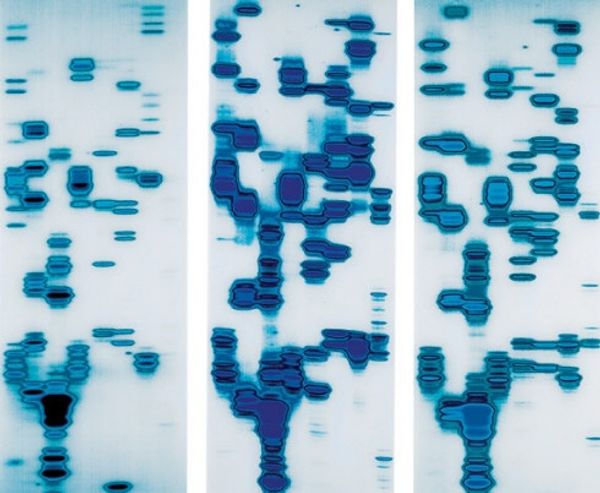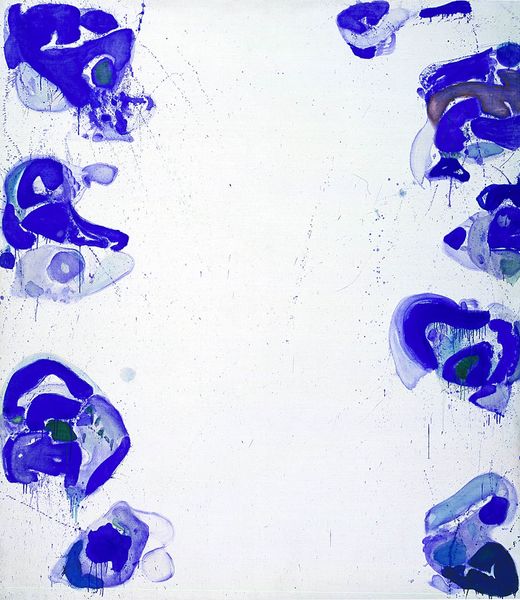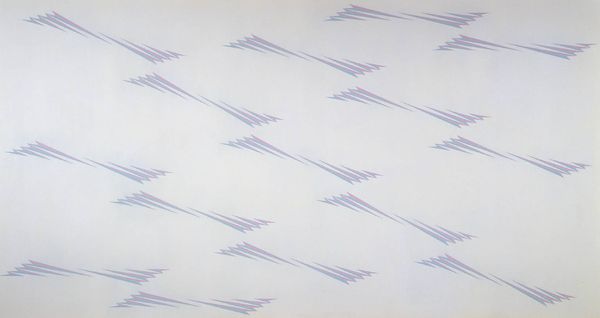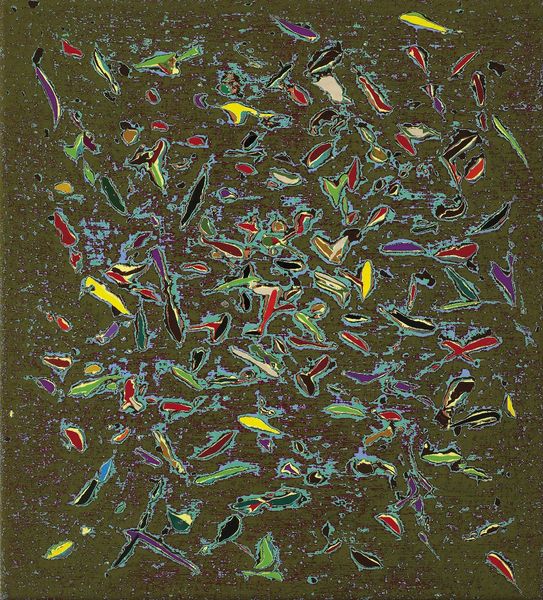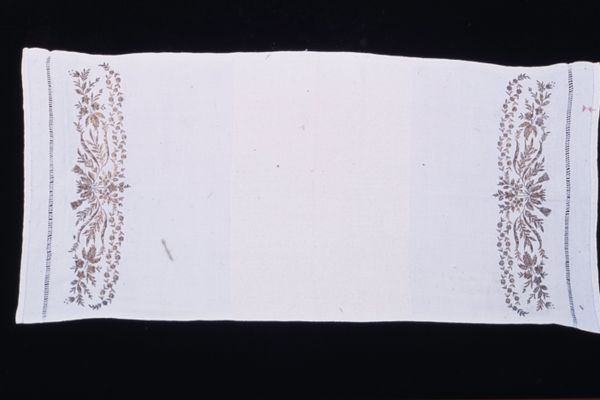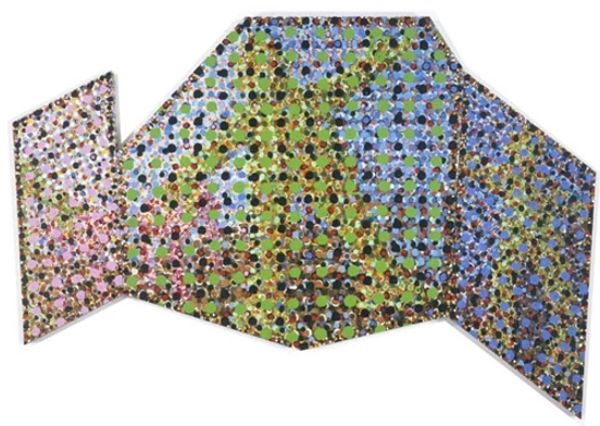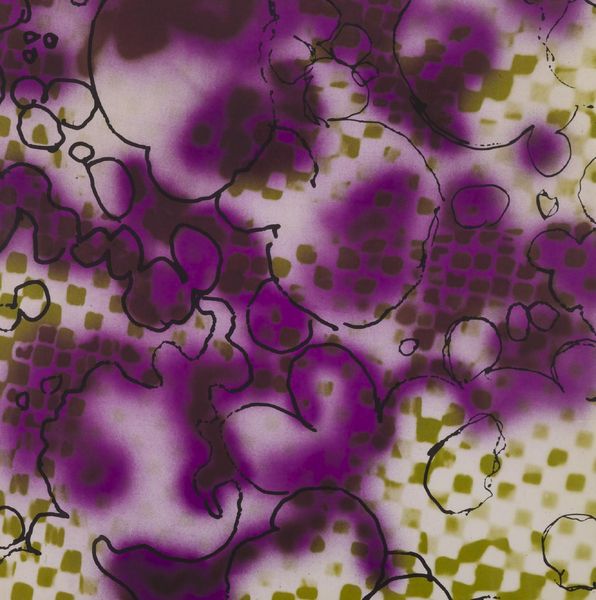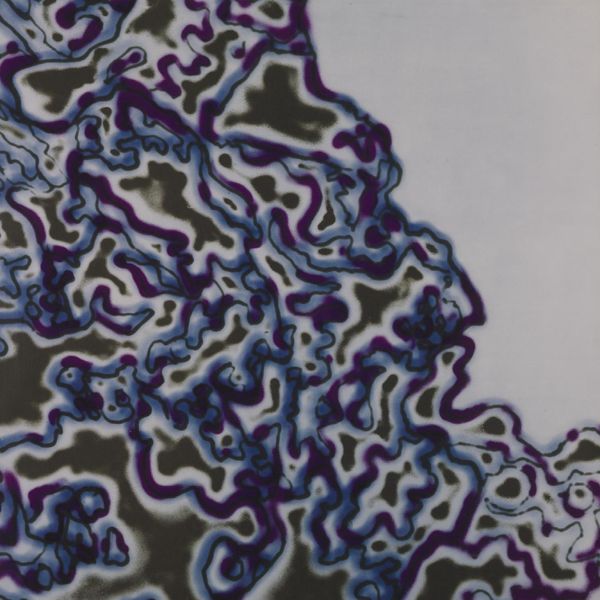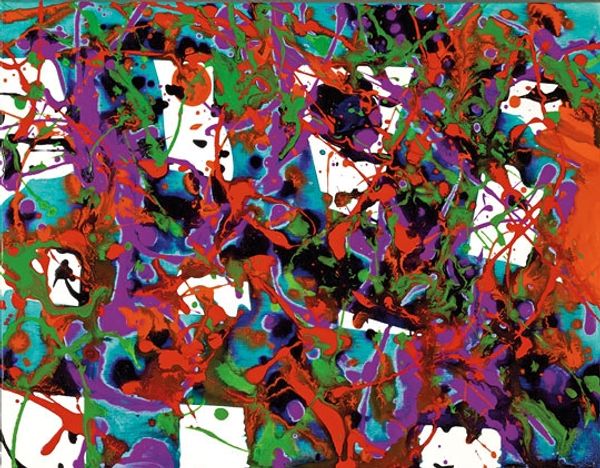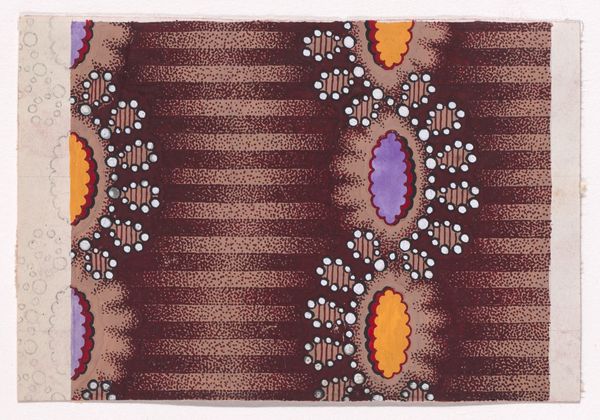
print, installation-art
#
neo-conceptualism
#
abstract painting
#
conceptual-art
# print
#
appropriation
#
acrylic on canvas
#
installation-art
#
abstraction
#
painting art
#
digital-art
Copyright: Inigo Manglano-Ovalle,Fair Use
Editor: This installation, "Doug, Joe and Genevieve (from The Garden of Delights)" created by Iñigo Manglano-Ovalle in 1998, presents three panels that seem to visualize the invisible. It reminds me of the imagery used to represent the human genome. How do you approach a piece like this? Curator: With formalism, we first consider the artwork’s composition. Note the arrangement of the three distinct panels and how each contains an array of shapes in varied colors like blues, yellows, and reds against a white ground. How would you describe the visual relationships within and between the panels? Editor: I see each panel containing a unique, almost chaotic system of colorful shapes and lines, creating a sense of organized randomness. There seems to be no immediately discernible pattern beyond the basic composition. Curator: Precisely. Consider now the medium – what appears to be digital art or a form of print – contributing to its flat, almost clinical aesthetic. Do these visual elements, considered formally, offer clues to its interpretation, separate from its title? Editor: The combination of the bright colours and structured shapes definitely evoke a feeling of technology and possibly scientific investigation, but it is hard to relate it with its title, The Garden of Delights, a clear appropriation from Bosch's work. It seems to contrast greatly in intention. Curator: Exactly. The contrast prompts us to consider the artist’s intent in juxtaposing seemingly disparate visual vocabularies, that of scientific data representation and artistic allusion. It asks, perhaps, how do we find “delight” in an increasingly data-driven world? Or, maybe, to which extent we accept to read information presented formally even if obscure to us. Editor: I see that now. Looking beyond the representational aspect, it questions how we read and find meaning in these forms, separate from explicit cultural contexts. It is definitely more thought-provoking than I initially assumed. Curator: Indeed. Through close observation of form and its interplay with technique, we uncover the work’s capacity to question perception.
Comments
No comments
Be the first to comment and join the conversation on the ultimate creative platform.
